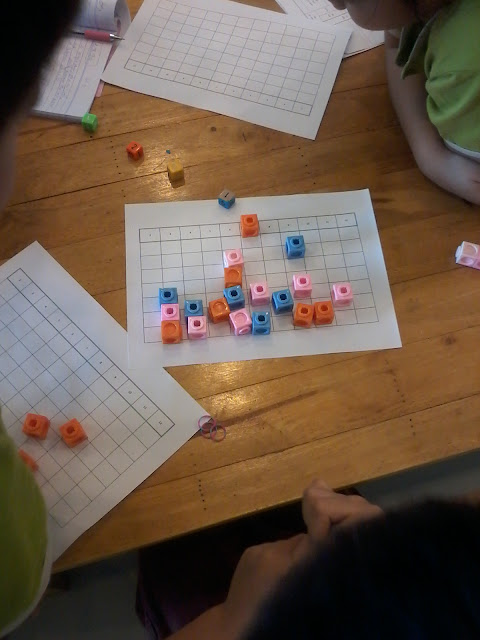Warm-up
Not exactly a game, we got them started with a quiz on some frequently written words:
a, the, and, I, to, was, my, of, we, he, she
After the quiz, the kids took turns writing the words on the board and we talked about a couple of tricky points:
- "to" vs "two:" yes, they sound exactly the same, but mean different things. No one thought about "too" at this time (isn't English wonderful?)
- "th" sound: one of the English sounds that doesn't appear in Thai. Actually, there are two distinct sounds made by the "th" combination, but even most native speakers don't realize this (compare "this" and "with.") The fun thing about "th" is that we can exaggerate and stick out our tongues!
- "sh" is another one that doesn't exist in Thai
Making words (PDQ variation)
We have a set of cards to make 3 letter words. On one side, the cards have parts of pictures and a letter, so when you put the 3 matching cards together it will spell out a 3 letter word that describes the picture. For example: cow, zoo, hat, pin, fin, etc. The other side just has the letter in larger size.
For our game, I drew out two cards and showed the letter side. We then competed to make words that contained those two letters. To practice, we all worked together. After getting comfortable, we split into two groups. For each round, two kids would go head-to-head, but their teammates could give them suggestions. The winner of each round was the person who came up with the longest word that uses both letters (though we sometimes awarded the person who came up with the most words). and that team would get the two cards. Each round took 1-2 minutes.
A boggle twist
After going through all the players a three or four times, each team had collected a decent collection of letters. We then gave them 5 minutes to write down all the words they could make using only the letters they had collected.
Summary
Together, we found these activities were fun and engaging for the kids and good practice spelling. I think the slightly different mental processes involved in the two games made a good combination for the session.





